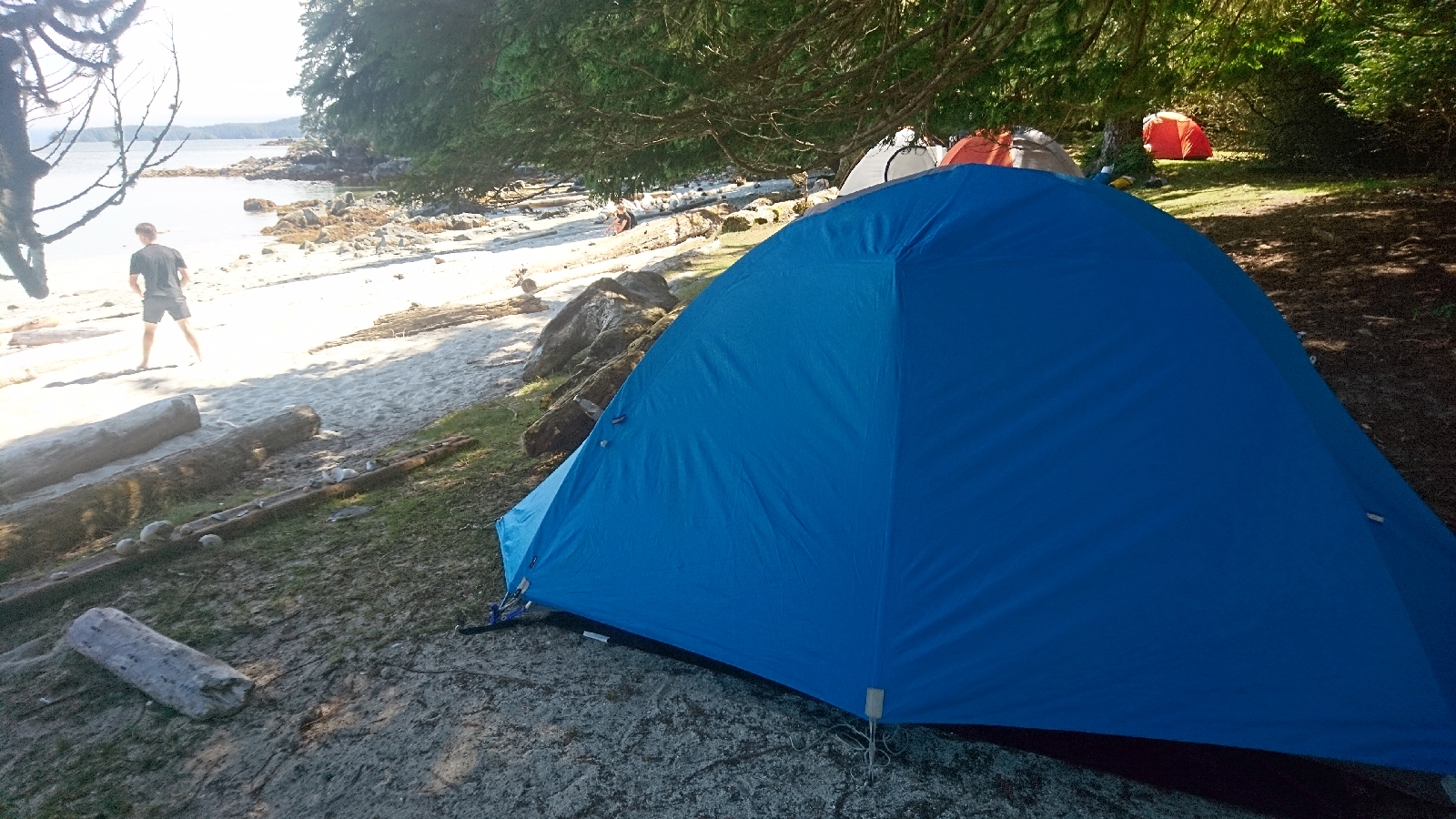We hit the jackpot!
We had guides Ben (30, guiding 10 years, super laid back, fun and reassuring) and Erica (24 and keen to learn).
Then Peggy, 73 years of age, people! Peggy put us all to shame as she steamed around the islands in her solo canoe being fun and lovely.
A couple called Tiffany and Kevin, both students. She's just finished a masters in law and Kevin is a PhD student and scientist who 'mutates the crap' out of RNA proteins (RNA is cousin (?) to DNA and by mutating the proteins scientists can find ways to rectify genetic conditions such as cerebral palsy).
Then the family!
Brent, grandfather, 70 ish. A judge.
Daughter, Catherine, 40, works in mining.
Brents grandchildren and Catherine's neice and nephew, lil Catherine (11) and Luc (13).
Everyone was great, we all pitched in (good in tents - boom!) and everyone got on. All lovely.
Bonus too, not the deluge of mozzies like NN1 and I had in 2018 and kayaking is definitely easier than canoeing...
So, we started on Monday at 8am. We went with Majestic Ocean Kayaking in Ucluelet. We had been given dry bags the day before had packed our stuff and dressed appropriately. When we arrived I expected a packing session but no, it was straight onto a loaded motor boat, piloted by Cap'n Gary, to be bussed out to the islands.
On the way, to our pleasure, we saw a group of seals waving at us..
They are accustomed to scraps from fishing boats and one brave (or greedy) specimen chased us through the waves, honking wildly.
Then, to my absolute delight, we saw a huddle of sea otters. Actually, I want to call it a cuddle of sea otters. They float amongst the anchorless kelp, keeping their young close (babies ride on mum's belly) and inquisitively poking their beautiful little faces towards us. Sea otters don't come on land. They stay adrift, protected by the densest fur of any living creature. This is what had them hunted to local extinction in the 1800s. They were brought back in the 70s when groups of otters were bussed down from Alaska and now the population is again stable. Without the otters the anemone population exploded and the kelp forests were decimated, as anenomes feast on kelp roots.
Otters have brown and tan faces, which blend perfectly with the kelp which they float in. They also eat shellfish and each otter has a favourite stone to knock the mussels and oysters against, which they keep in a little pocket in their arm pit.
You could say they shellfishly use their own stones.
We landed on a beach near Benson Island and Clark Island. Benson is a place on which a man called John Benson had a lodge where people stayed in the late 1800s, up until the 70s (I think) when the place was made into a national park it had a lodge. Until 2000, people could camp on it. However for 5000 years before that it was a sacred place.
Wiki says:
Benson Island, known to the Tseshaht First Nation people as C'isaa (Ćišaa?atḥ) or Ts'ishaa (Ts'isha?atH), is part of the Broken Group in Barkley Sound on the west coast of Vancouver Island, British Columbia, Canada. It is notable because the Tseshaht First Nation recognize it as the creation site where the first man and first woman of the Tseshaht people came into this world.
As you arrive on the island and walk towards the interior you can almost see the spirits of people who have gone before wandering through the glades. This place hums.Then we went to Clark, where we pitched up and unloaded. We had a sandwich style lunch before heading off for an afternoon paddle.
The map on the previous post is what we did on day one. The red bit which cirvles bottom left. Ben drew that for me. I had no idea where we were...




No comments:
Post a Comment